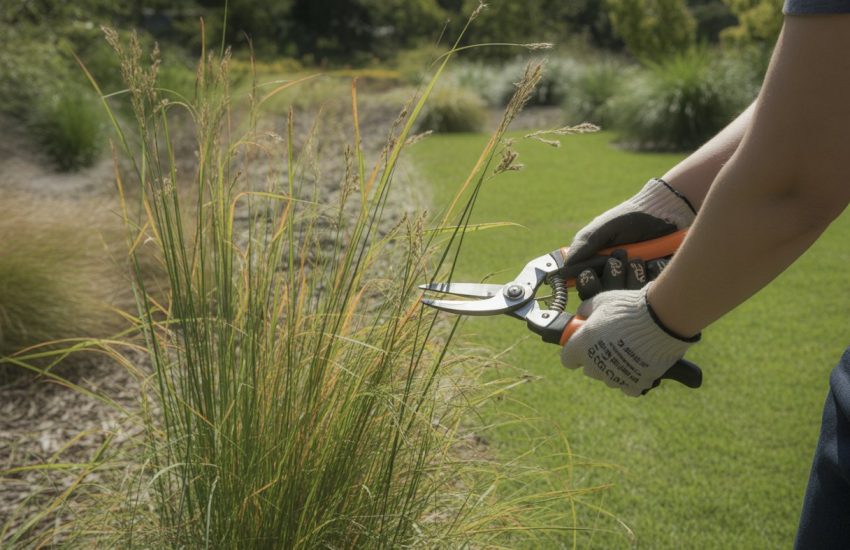Ground Cover Plants Most Suitable to Missouri Climate
Ground cover is a general term for low-growing flowering plants. These plants are often planted between garden beds as well as on lawns to add color and texture to the landscape. Some common names for ground covers include creeping phlox, wintergreen, creeping Jenny, and violets. It is important to note that not all of these plants will grow in your area. Below you will find some ground cover plants that are prevalent in Missouri.
Barrenwort
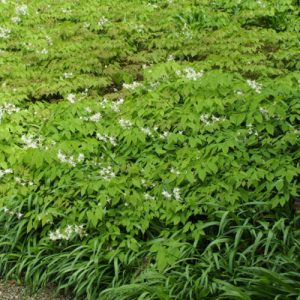
Barrenwort is a small plant with flowers that look like little pinwheels. The plants are usually between 6 inches and 18 inches tall, but they can grow taller if they aren’t trimmed or crowded by other plants. The leaves on barrenwort are round and hairy, and they have a mottled pattern on them. The flowers are pink or white, but they often have darker spots on them.
Growing barrenwort is easy because it has shallow roots and doesn’t require much care to survive. It prefers full sun or partial shade, although it will tolerate more shade than most other plants. You can plant barrenwort in containers or directly in the ground where you want to use it as a ground cover. If you start with bare root plants instead of seedlings from nurseries, you may need to transplant them several times before they settle into their permanent home at least once before they bloom for the first time.
Bearberry
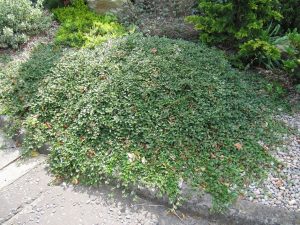
Bearberry, also known as kinnikinnick, is a low-growing plant that thrives in dry climates. It is a favorite for covering hillsides and slopes, as well as filling in gaps between other plants. The pink bell-shaped flowers attract bees, butterflies, and birds to the garden. Bearberry grows best in full sun with well-drained soil. It can tolerate drought and salt spray. In areas with heavy soil, it should be planted in an area where roots can spread out freely. Bearberry is not tolerant of shade or wet conditions and should be planted at least 3 feet apart from other plants to avoid crowding them out.
Blood-red Cranesbill
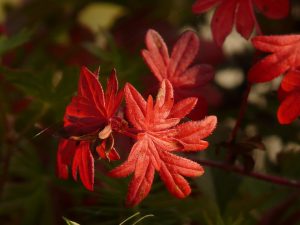
Blood-red cranesbill (Geranium sanguineum) is a favorite, easy-to-grow ground cover for full sun to partial shade. It has heart-shaped leaves that are deep green on top and a rich burgundy underneath. The plant gets its name from the red stems that contrast so nicely with the leaf color.
Blood-red cranesbill grows best when planted in the spring or early summer. The plant can tolerate poor soils with little water and prefers sandy loam that drains well. The plant doesn’t like compacted soil, so add plenty of compost when planting it in your garden or flowerbeds. You should also amend the soil with other organic matter such as peat moss or leaf mold before planting any new perennials or shrubs so they can grow properly without needing much care from you once they’re established in your yard or garden beds.
Candytuft

Candytuft is a low-growing, spreading ground cover that looks like a carpet of pink and white flowers in spring. It’s an easy plant to grow, but it needs full sun and well-drained soil. Candytuft spreads rapidly by creeping rhizomes (underground stems) that make new plants where they touch the soil. It can form colonies up to 2 feet wide or more if left unchecked by pruning or mowing. Plants bloom on stems 18 inches tall with small, double flowers that look like miniature candy canes with white or pink petals and yellow centers. The foliage is green with rounded lobes or heart-shaped leaves that are about 1/2 inch long.
Coralbells
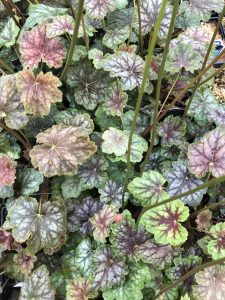
Coralbells is a plant that grows in the wild and can grow in the garden. It can be used as an understory plant, ground cover, or even as a perennial. The plant is native to Missouri, so it will grow well here.
Coralbells is a member of the Aster family of plants and is related to pale purple coneflower, swamp sunflower, and tall ironweed. The flowers are very similar to pale purple coneflower with a slightly different shape, but they do not have the red center found on pale purple coneflower.
Coralbells grow well in partial shade and will tolerate both wet and dry soil conditions. It prefers moist soil, but it can adapt well to drier soil conditions if there are plenty of organic materials added before planting time.
Creeping Juniper
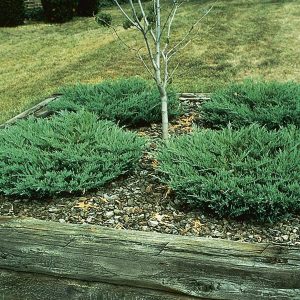
Creeping juniper is a hardy, low-growing plant that grows in mounds of evergreen foliage. The foliage is a blue-green color and has a slightly waxy appearance. It has small, light blue flowers that appear during the spring and summer months. The flowers are insect pollinated and have a strong fragrance. The shrub prefers well-drained soil and full sun to partial shade.
The creeping juniper plant grows slowly at first but will eventually spread out into a wide mass of evergreen foliage. It does not need much maintenance and can be left alone for long periods of time without any issues.
The creeping juniper shrub is perfect for ground cover because it can spread out over large areas with ease. This makes it ideal for covering large areas quickly without taking up too much space or using too much energy on maintenance tasks like weeding or watering plants in pots or planters outside your home or office building.
Creeping Phlox
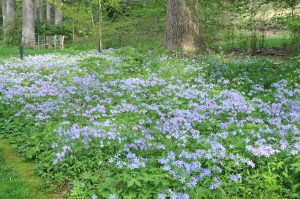
Creeping phlox is one of the best plants for covering bare soil in the garden. You can grow this perennial in full sun or partial shade, and it will thrive in just about any type of soil, including dry and poor ones.
The creeping phlox plant is a herbaceous perennial that belongs to the Polemonium genus. It has several species and cultivars, but all of them have similar characteristics. They are native to North America and Canada, where they grow wild as well as being cultivated as an ornamental plant.
When growing creeping phlox, you should plant it in spring or early summer when there is no threat of frost. The best time to do this is after all danger of frost has passed but before the heat of summer becomes too intense. The seeds should be planted directly into the garden bed or container where they are going to grow once they have been prepared by either soaking them overnight or scarifying them with sandpaper to remove their outer seed coatings. The seeds should be planted one inch deep into the ground or potting mix and then kept moist until germination occurs, which usually takes about two weeks at room temperature.
Goldflame Honeysuckle

Goldflame honeysuckle is a fast-growing, deciduous vine native to Japan. It is known for its showy yellow flowers. Goldflame honeysuckle is a popular ground cover because of its hardiness and fast growth. This plant can grow up to 15 feet in one season, making it ideal for covering large areas quickly. It also grows well in poor soil conditions and requires little maintenance once established.
The best way to grow this plant is from cuttings taken from existing plants or from seeds grown indoors before planting outside in spring or fall. You can plant it in the ground or use it as a wall-covering vine by growing it on a trellis or arbor if you have one available.
The leaves of Goldflame honeysuckle are dark green with yellow edges that turn orange in fall once the plant dies back for winter. The flowers open in late spring when they are bright yellow and then turn into large red berries that attract birds and other wildlife.
Hostas
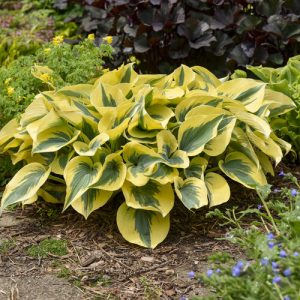
Hostas are a large genus of plants that are grown in the shade garden. They have large, round leaves and grow in clumps with multiple stems. There are hundreds of varieties in this genus. Hostas vary in size, leaf color and shape, and flower color. They are easy to grow and can be used to fill out areas where other plants don’t grow well or don’t thrive as well as they might otherwise.
Hosta spp grows best in moist soil with good drainage, but it tolerates dry soil as well. It needs partial shade but does not tolerate full sun at all. It is an excellent ground cover for shady areas around your yard where grass will not grow well or at all.
Japanese Spurge
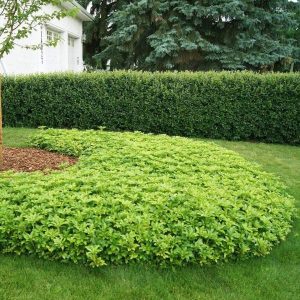
Japanese spurge (Pachysandra terminalis) is a hardy groundcover that grows well in Missouri. It is a good choice for areas that receive full sun and partial shade, although it does not do well in areas with high humidity. The plant prefers well-drained soil and grows best when allowed to dry out between waterings.
Japanese spurge may take up to two years to establish itself, but after that, it will thrive without much care. It requires only occasional fertilization and mulching in the spring to keep it looking its best.
Japanese spurge is a perennial evergreen shrub with dark green leaves that grow in opposite pairs along the stem. The plant reaches heights of 1 to 2 feet and spreads easily by rhizomes, which can be dug up and divided if necessary.
Japanese spurge should be planted in early spring or late fall so that the roots have time to become established before winter arrives in Missouri. Space plants are about 18 inches apart for a dense ground cover or 3 feet apart for an open spread of leaves on the ground.
Lily-turf
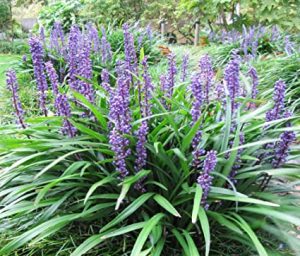
Lily turf is a perennial ground cover that is often used as a lawn substitute. It’s relatively easy to grow and maintain, and it’s also quite durable. Here are some things you should know about Lily-turf before you plant it in your garden:
Lily-turf is a low-growing evergreen perennial with attractive foliage and white flowers. The plant has a creeping root system that helps keep it anchored in place, but there’s no need to prune it after planting because its roots will spread out on their own over time.
Lily-turf grows best in full sun or partial shade and requires moist soil with good drainage. It can be planted in both spring and fall, but the best time to plant this ground cover is in spring when temperatures are above 45°F (7°C). For best results, plant in rows spaced at least 12 inches apart with plants approximately 3 inches apart within each row.
Lily-turf makes an excellent lawn alternative because it can tolerate foot traffic quite well without showing signs of wear or tear very easily.
Lungwort
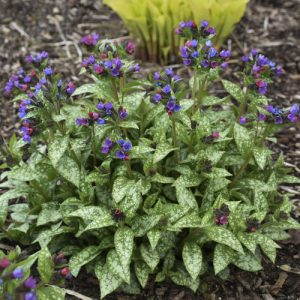
Lungwort is a beautiful ground cover that adds a pop of color to your yard. It’s easy to grow and can tolerate both sun and shade. You can even plant it in containers.
Lungwort (Pulmonaria) is a perennial plant that produces small white flowers. The flowers have a delicate appearance, which makes them great for adding texture to an area near your house or as a border in your garden bed. Lungwort grows well in moist soil, but it will also tolerate dry conditions. It prefers partial shade but will tolerate full sun if it receives enough water.
Lungworts are one of the easiest plants to grow from seed, which makes them perfect for beginners. They have very few requirements when it comes to soil and sunlight, so they’re great for beginners looking for an easy way to start gardening without much effort or experience. They also reseed themselves every year, so you don’t need to worry about replacing them every season like many other types of plants do.
Pinks (Dianthus)
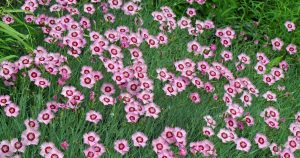
Pinks, or Dianthus, are very popular ground cover plants. They are very hardy, growing in most soil types, and they thrive in full sun to partial shade. They prefer well-drained soil and should not be allowed to dry out.
Pinks are low-growing plants that are spread by rhizomes, forming a mat of foliage that completely covers the ground. The flowers are showy and have an interesting fragrance that attracts butterflies and bees. The flowers come in many colors, including white, pink, red, purple, and blue. Some varieties also have leaves that change color in fall.
If you are looking for a low-maintenance, easy-care ground cover, consider planting one of the plants in this article. They thrive in the majority of Missouri’s growing conditions. Ground covers keep your soil cool and preserve moisture levels.

